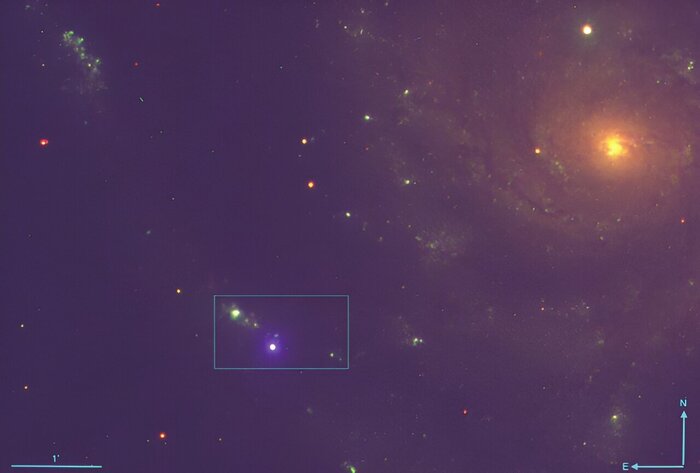Enlarge image
Newly discovered star SALT: The blue color comes from the high surface temperature
Photo: Tom Watts / STScI / The Dark Energy Survey / dpa
Using a massive telescope in South Africa, an international team of researchers has discovered eight of the hottest stars in the universe.
The surface temperature of the celestial bodies is more than 100,000 degrees, as reported by the University of Tübingen.
For comparison: On the surface of the sun "only" about 5800 degrees are reached.
The research team, led by Simon Jeffrey from the Armagh Observatory in Northern Ireland, which also included Professor Klaus Werner from Tübingen from the Institute for Astronomy and Astrophysics, examined data from so-called sub-dwarfs.
This is what stars are called that evolve into white dwarfs.
“White dwarfs are about the size of Earth, but a million times more massive.
They are the densest existing stars made of normal matter,” explained Werner.
Both subdwarfs and white dwarfs could have high surface temperatures.
"Of the eight super-hot stars we discovered, the hottest was a white dwarf with a surface temperature of 180,000 degrees."
According to astrophysicist Werner, each of the stars shines more than a hundred times as brightly as the sun.
However, they are all between 1,500 and 22,000 light-years from Earth, while the Sun is just over eight light-minutes away.
So you can not see the hot, bright dwarfs with the naked eye from Earth.
A light year is the distance that light travels in a year.
Despite the distance, the discovery is important for the experts: "The results could also shed new light on the formation of our galaxy," explained Werner.
The results were published in the journal "Monthly Notices of the Royal Astronomical Society" and the measurements were taken with the "Southern African Large Telescope" (SALT), which is located around 400 kilometers north-east of Cape Town.
ani/dpa





/cloudfront-eu-central-1.images.arcpublishing.com/prisa/TQ73US57UFGWTIXR7C3BS2OTIA.jpg)








